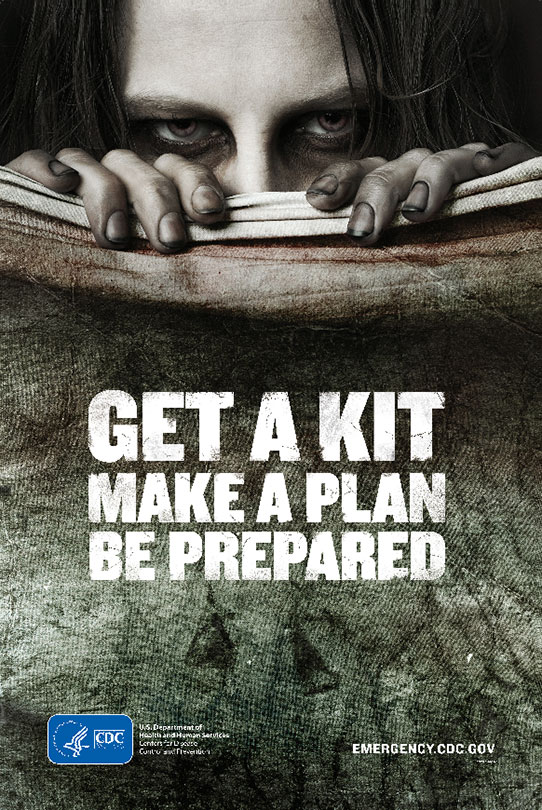It may seem odd to think about a pending zombie apocalypse from a museum educator’s perspective, but it can be a fun and useful exercise for a variety of purposes. We can use the cheeky pop culture trend to make some otherwise dry topics (such as disaster and emergency management planning) a little more fun and lively. Medical health professionals, like those at the Centers for Disease Control, use a hypothetical zombie apocalypse to model infectious disease outbreaks. The Pentagon has also used a fictional zombie apocalypse scenario as a planning and training tool. This has allowed the U.S. government to use zombies as a theoretical risk to plan defense strategies without offending any actual, real-life friends or foes that might take even a pretend elimination personally.

This poster from the Centers for Disease Control promotes a tongue-in-cheek awareness for zombie apocalypse preparation.
CDC - Office of Public Health Preparedness and Response. Preparedness 101 - Zombie Posters. http://www.cdc.gov/phpr/zombies.htm. March 2016.
How do we take these great ideas and turn them into our own living history zombie survival boot camp? One example can be our approach to water. Most survival books and websites recommend stocking up on a minimum of a gallon of drinking water per person per day. Just like the old proverb about teaching a man to fish, teaching people to find, filter, and purify their own water will help them survive longer than storing water alone. The State Historical Society of North Dakota has a SEND trunk available specifically about water resources. I have written about the SEND program before here and here. Another program I'll be teaching this spring will be one of the new Museum Lab classes for school-aged children. One class in March will focus on teaching kids how to make a water filter action system out of various materials. If it goes over well, there may be more sessions offered this fall. We can use programs like SEND and Museum Lab to teach both history and survival skills through museum programs.
Since humans can only survive for three to five days without water, it has always been critical for people to be able to find this resource. Throughout time people have learned how to watch for clues that will lead them to water, such as watching for the direction birds fly or places insects swarm. Humans learned how to follow animal trails to good sources of drinking water. We have learned to find vegetation that is high in water content and have learned how to collect and store water. People have even figured out how to find water underground and how to remove salt from ocean water. We also had to learn how to filter and purify water to remove the sediment and bacteria that can make us sick, or even kill us. Water is a resource that we have learned to manage to keep it clean and make sure there is enough for everybody. As we read about water availability and quality in other parts of the country, the relevance to our daily lives becomes obvious. What a great way to connect kids to both science and history in one fun topic.

